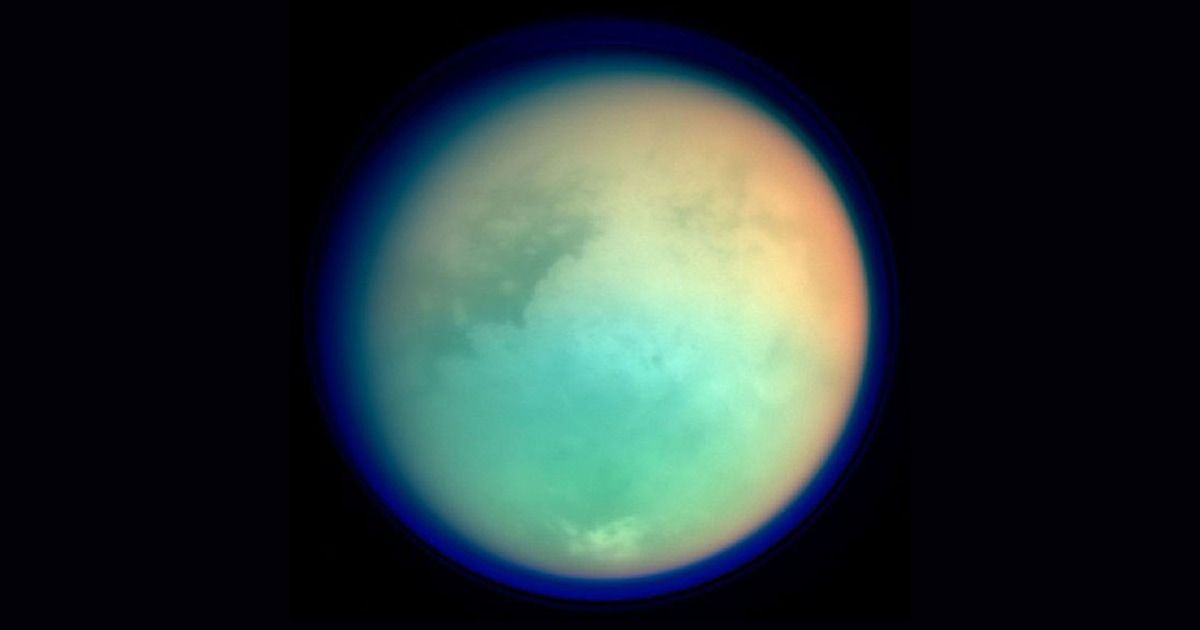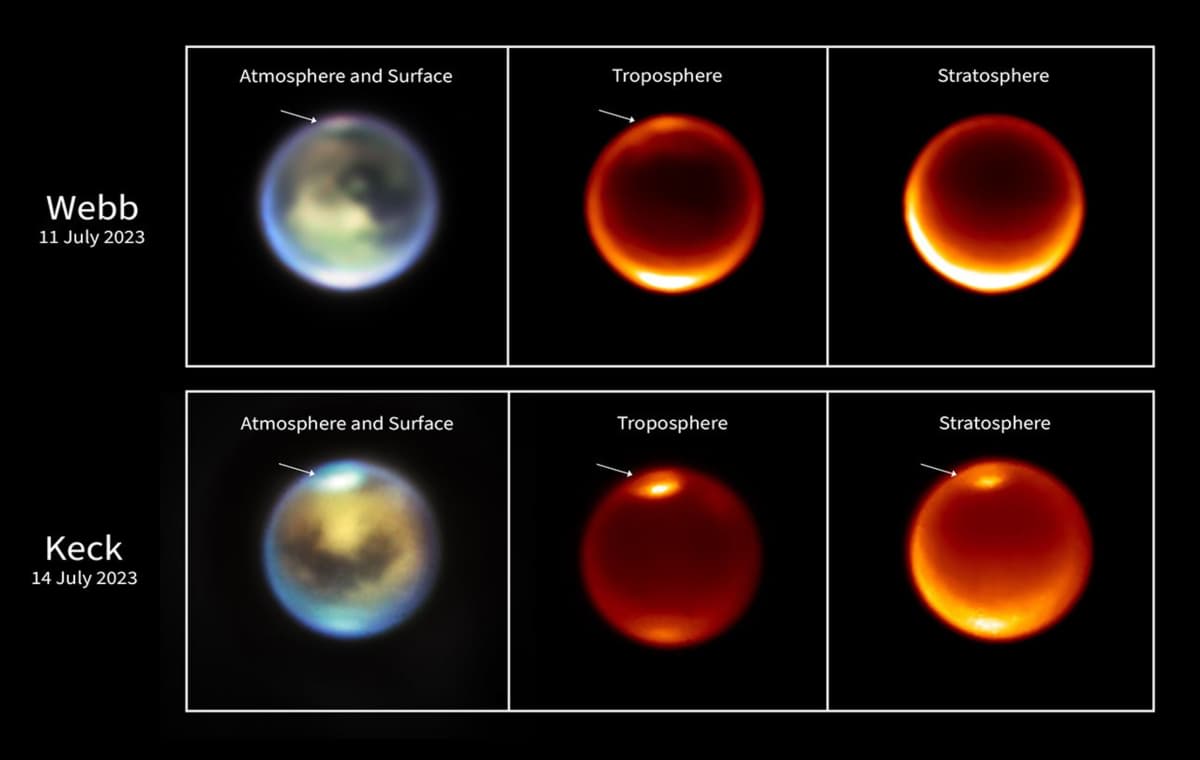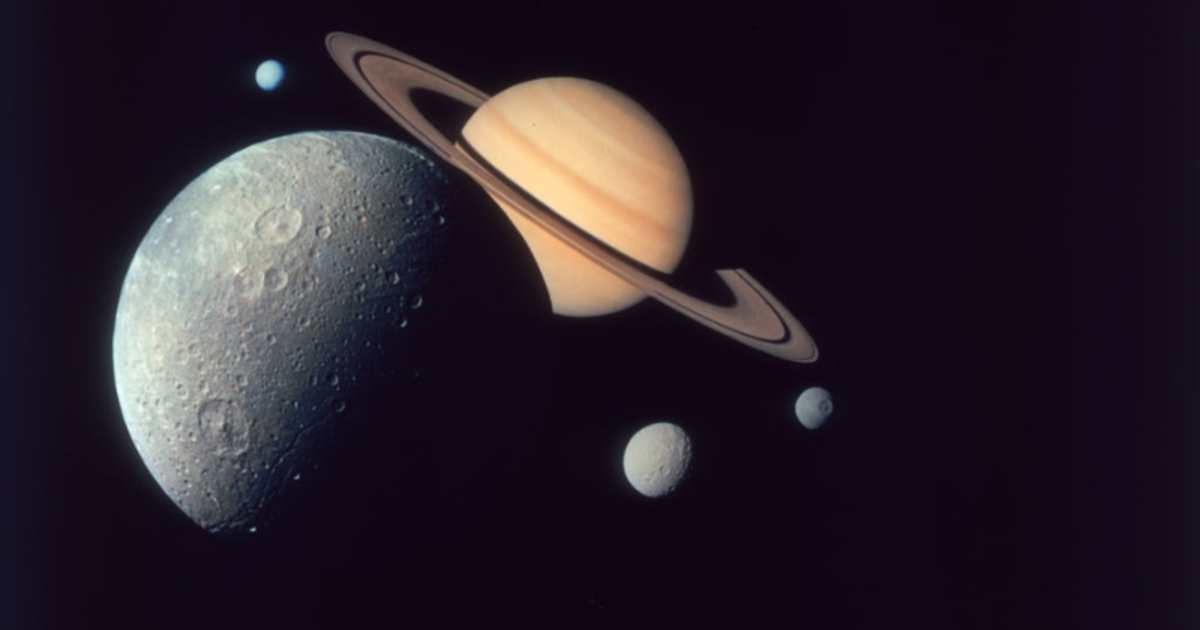NASA Captures Strange Floating Object Over Saturn's Moon, Found to be Clouds Rising Above Titan

Astronomers were occupied with Mars at the moment, but Saturn’s moon might be turning their heads with a new observation. The pairing of NASA’s James Webb Space Telescope (JWST) and the ground-based Keck II telescope in Hawaii revealed first-time evidence. They found the proof for cloud convection in the northern hemisphere of Saturn’s moon, Titan, according to NASA. JWST detected an important carbon-containing molecule that provided insights into the chemical processes of Titan’s complex atmosphere. Methane on Titan had a similar role to water on Earth, as it evaporated from the surface and rose into the atmosphere to form methane clouds.

Once it condensed and formed methane clouds, it would occasionally fall as a chilly, oily rain onto a solid surface. “We were able to see methane clouds evolving and changing close to Titan’s north pole over multiple days, in the region where large seas and lakes of methane were discovered by the Cassini spacecraft,” stated Conor Nixon, lead author and research scientist at NASA Goddard Space Flight Center, according to W.M Keck Observatory. This discovery helped better understand the climate cycle of Titan, a world covered in a yellowish, smoggy haze. It showed how methane clouds created rain and replenished the evaporated methane.
Evaporation, condensation, precipitation on my mind. This is the (methane?!) cycle, and it happens all the time! 🎶
— NASA Webb Telescope (@NASAWebb) May 14, 2025
Webb provided evidence for cloud convection on Saturn’s moon Titan, the only other place in our solar system with weather like Earth! https://t.co/oRYXRySqM0 pic.twitter.com/s8nu9URPFa
It was the first sign of cloud convection in the area, a dynamic weather process similar to Earth’s storms. Titan’s surface temperatures were around –179°C (–290°F), cold enough to freeze water solid. The JWST and Keck observations were made possible by their ability to witness different wavelengths of infrared. It allowed scientists to look through the hazy atmosphere and observe the clouds at different altitudes, as per BBC Sky at Night Magazine. This process of rising clouds was previously seen in the southern hemisphere but was a first in the northern hemisphere, and the observations were made at the end of Titan’s northern summer.

Titan was the only moon in the solar system with a substantial atmosphere, but it was shrouded by its smog. The scientists captured clouds in the moon’s mid and high northern latitudes using ground-based observations. They found that the clouds appeared to move to higher altitudes over days but did not see any direct precipitation, according to Gizmodo. With its temperatures and gaseous bodies, the moon hosted a complex organic chemistry, which was basic to life on Earth. Studying Titan was a way to look at how different forms of life evolved under completely different planetary conditions, as on Titan. Methane was also consumable, according to the study.

The stable atmosphere in vision was observed with adaptive optics on the advanced camera NIRC2 (Near-infrared Camera, Second Generation) to capture highly detailed images, as per Phys Org. "Since the different filters on the Keck NIRC 2 camera see to different depths in Titan's atmosphere, we were able to see on the last night of observing (July 14th) that the clouds had moved upwards in altitude, like a convective cell on Earth," Nixon added. The study was published in the journal Nature Astronomy, and the Twilight Zone program at Keck Observatory was significant in helping Nixon and his team monitor how the weather on Titan changed over time.